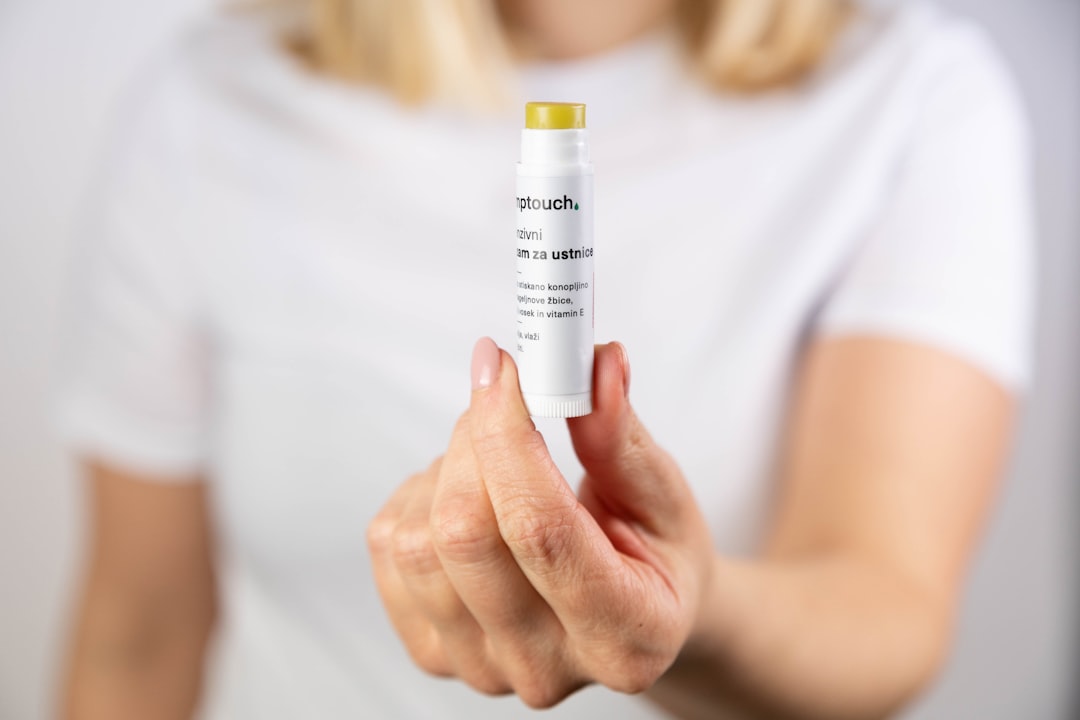When you experience a wound that requires stitches, it’s essential to grasp the intricacies of the healing process. Your body is a remarkable entity, equipped with a natural ability to mend itself. The healing journey begins immediately after the injury occurs.
During the initial phase, blood vessels constrict to minimize blood loss, and platelets gather to form a clot. This clot serves as a protective barrier while your body begins to repair the damaged tissue.
As days pass, the inflammatory phase gives way to the proliferative phase, where new tissue starts to form. This is when your body produces collagen, a vital protein that provides structure and strength to the healing area. You may notice that the wound begins to close, and new skin starts to emerge.
Understanding this process can help you appreciate the importance of proper care during each stage. By being mindful of how your body heals, you can take proactive steps to support recovery and minimize complications.
Key Takeaways
- The healing process after getting stitches involves several stages, including inflammation, tissue formation, and remodeling.
- Immediate post-stitch care involves keeping the wound clean and dry, avoiding excessive movement, and following any specific instructions from the healthcare provider.
- Stitches are typically removed within 5-14 days, depending on the location and type of wound.
- Signs of healing include decreased pain and swelling, the formation of new tissue, and the absence of signs of infection.
- Scar cream should be applied to the healed wound to help minimize the appearance of the scar and promote skin regeneration.
Immediate Post-Stitch Care
Once your stitches are in place, immediate care is crucial for ensuring optimal healing. The first step is to keep the area clean and dry. You should follow your healthcare provider’s instructions regarding when and how to clean the wound.
Typically, you will want to avoid soaking the area in water for at least 24 hours after getting stitches. Instead, gently cleanse the area with mild soap and water, taking care not to disturb the stitches themselves. In addition to cleanliness, you should also monitor the stitched area for any signs of infection.
Redness, swelling, or increased pain can indicate that something is amiss. If you notice any unusual changes, don’t hesitate to reach out to your healthcare provider for guidance. Keeping an eye on your stitches during this initial period can help you catch potential issues early on, allowing for prompt intervention if necessary.
When Stitches are Removed
The removal of stitches marks a significant milestone in your healing journey. Typically, stitches are removed within 5 to 14 days after placement, depending on the location and severity of the wound. When you visit your healthcare provider for this procedure, you may feel a mix of anticipation and anxiety.
It’s natural to wonder about the state of your healing and what comes next. During the removal process, your healthcare provider will carefully cut each stitch and gently pull it out. You might feel a slight tugging sensation, but it should not be painful.
After the stitches are removed, your provider will likely give you instructions on how to care for the area moving forward. This may include recommendations for keeping the site clean and protected as it continues to heal. Understanding what to expect during this phase can help ease any apprehension you may have about the procedure.
Signs of Healing
| Signs of Healing | Definition |
|---|---|
| Reduced Pain | Decrease in physical discomfort or suffering |
| Improved Mobility | Enhanced ability to move and function |
| Decreased Inflammation | Reduction in swelling and redness in the affected area |
| Restored Energy | Regained vitality and strength |
As you progress through your recovery, it’s important to recognize the signs of healing. One of the first indicators is a reduction in pain and tenderness around the stitched area. Initially, you may have experienced discomfort, but as time passes, this should gradually subside.
Additionally, you may notice that any swelling or redness begins to diminish, signaling that your body is effectively managing inflammation. Another sign of healing is the appearance of new skin forming over the wound site. This new tissue may initially look different from your surrounding skin—perhaps pink or slightly raised—but it’s a positive indication that your body is working hard to repair itself.
As weeks go by, you should see further improvements in color and texture as the area continues to mature. Being aware of these signs can help you stay optimistic about your recovery and encourage you to maintain proper care practices.
Scar Cream Application
Once your stitches are removed and your wound has healed sufficiently, you may want to consider applying scar cream to minimize scarring. The application of scar cream can be an essential part of your post-healing routine. It’s important to start using these products only after your skin has fully closed and any scabs have fallen off naturally.
When applying scar cream, ensure that the area is clean and dry before use. You should follow the instructions provided with the product for optimal results.
Generally, a thin layer is sufficient; there’s no need to overapply. Gently massage the cream into the scarred area using circular motions, which can help improve circulation and promote absorption. Consistency is key; regular application can significantly enhance the effectiveness of scar creams over time.
Types of Scar Creams

There are various types of scar creams available on the market, each designed with specific ingredients aimed at improving the appearance of scars. Silicone-based gels and sheets are among the most popular options due to their proven efficacy in flattening and softening scars. These products work by creating a protective barrier over the scarred area, which helps retain moisture and promotes healing.
In addition to silicone-based products, you may also encounter creams containing ingredients like vitamin E, aloe vera, or hyaluronic acid. Vitamin E is often touted for its skin-nourishing properties, while aloe vera is known for its soothing effects on irritated skin. Hyaluronic acid can help maintain moisture levels in the skin, contributing to a more supple appearance.
When selecting a scar cream, consider your skin type and any sensitivities you may have; this will help ensure that you choose a product that works best for you.
Frequency of Application
The frequency with which you apply scar cream can significantly impact its effectiveness in reducing scar visibility. Most products recommend applying them at least twice daily—once in the morning and once before bed—to achieve optimal results. However, it’s essential to read the specific instructions provided with your chosen product, as some formulations may have different recommendations.
Consistency is crucial when it comes to scar management; therefore, establishing a routine can be beneficial. You might find it helpful to set reminders on your phone or incorporate application into your daily skincare regimen. By making scar cream application a regular part of your day, you’ll be more likely to stick with it long-term, maximizing its potential benefits.
Long-Term Scar Management
Long-term scar management involves ongoing care and attention even after initial healing has occurred. While scar creams can play a significant role in improving appearance, there are additional strategies you can employ for optimal results. For instance, protecting your scar from sun exposure is vital; UV rays can darken scars and make them more noticeable over time.
Wearing sunscreen or protective clothing when outdoors can help prevent this issue. In addition to sun protection, consider incorporating other skincare practices into your routine. Regular exfoliation can help remove dead skin cells and promote cell turnover, which may improve the texture of your scar over time.
Additionally, staying hydrated and maintaining a balanced diet rich in vitamins and minerals can support overall skin health and aid in scar recovery. Ultimately, understanding that scar management is an ongoing process can empower you as you navigate your healing journey. By being proactive about care and employing various strategies over time, you can work towards achieving smoother and less noticeable scars while fostering a positive relationship with your body’s natural healing abilities.
If you are wondering when to apply scar cream after stitches, you may find the article on InLaserHairRemoval website helpful. This article provides information on the best practices for scar care after stitches and offers tips on how to properly apply scar cream to promote healing and minimize scarring. It is important to follow the advice of medical professionals and use scar cream as directed to achieve the best results.
FAQs
What is scar cream?
Scar cream is a topical treatment designed to help reduce the appearance of scars. It often contains ingredients such as silicone, vitamin E, and other moisturizing agents to help improve the texture and color of scars.
When should I apply scar cream after getting stitches?
It is generally recommended to wait until the stitches have been removed and the wound has fully healed before applying scar cream. This is typically around 2-3 weeks after the stitches were placed, but it is important to follow the specific instructions provided by your healthcare provider.
How often should I apply scar cream?
The frequency of scar cream application can vary depending on the product and the severity of the scar. In general, scar cream is often applied 2-3 times per day for several months to see optimal results.
Can I apply scar cream to an open wound?
No, scar cream should only be applied to fully healed wounds. Applying scar cream to an open wound can increase the risk of infection and interfere with the healing process.
Are there any side effects of using scar cream?
While side effects are rare, some individuals may experience skin irritation or allergic reactions to the ingredients in scar cream. It is important to perform a patch test before using the product and to discontinue use if any adverse reactions occur.






